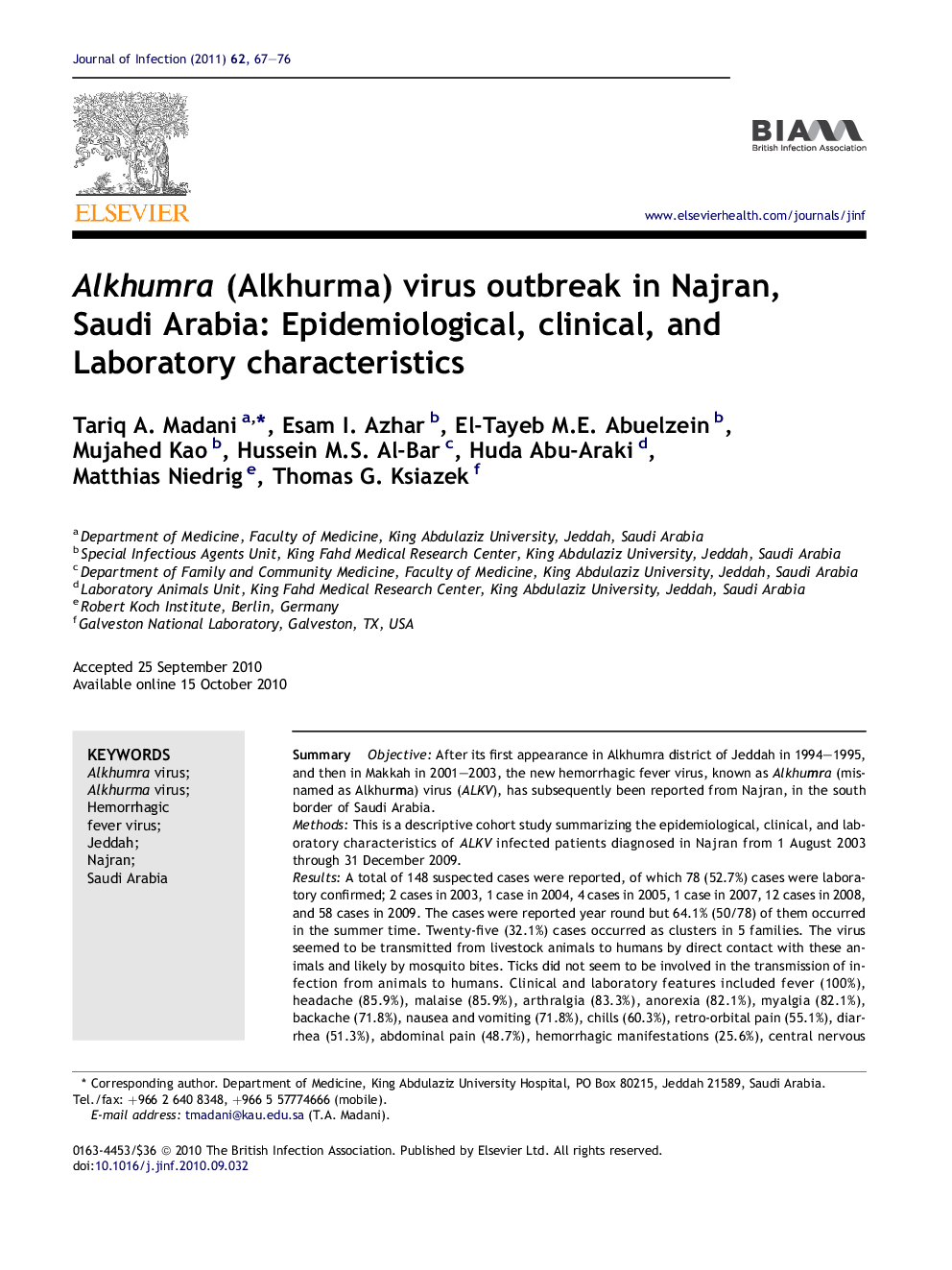| Article ID | Journal | Published Year | Pages | File Type |
|---|---|---|---|---|
| 3375552 | Journal of Infection | 2011 | 10 Pages |
SummaryObjectiveAfter its first appearance in Alkhumra district of Jeddah in 1994–1995, and then in Makkah in 2001–2003, the new hemorrhagic fever virus, known as Alkhumra (misnamed as Alkhurma) virus (ALKV), has subsequently been reported from Najran, in the south border of Saudi Arabia.MethodsThis is a descriptive cohort study summarizing the epidemiological, clinical, and laboratory characteristics of ALKV infected patients diagnosed in Najran from 1 August 2003 through 31 December 2009.ResultsA total of 148 suspected cases were reported, of which 78 (52.7%) cases were laboratory confirmed; 2 cases in 2003, 1 case in 2004, 4 cases in 2005, 1 case in 2007, 12 cases in 2008, and 58 cases in 2009. The cases were reported year round but 64.1% (50/78) of them occurred in the summer time. Twenty-five (32.1%) cases occurred as clusters in 5 families. The virus seemed to be transmitted from livestock animals to humans by direct contact with these animals and likely by mosquito bites. Ticks did not seem to be involved in the transmission of infection from animals to humans. Clinical and laboratory features included fever (100%), headache (85.9%), malaise (85.9%), arthralgia (83.3%), anorexia (82.1%), myalgia (82.1%), backache (71.8%), nausea and vomiting (71.8%), chills (60.3%), retro-orbital pain (55.1%), diarrhea (51.3%), abdominal pain (48.7%), hemorrhagic manifestations (25.6%), central nervous system manifestations (23.1%), leucopenia (87.7%), elevated liver enzymes (85.7%), prolonged partial thromboplastin time (52.6%), thrombocytopenia (46.2%), elevated creatine kinase level (45.7%), and elevated lactate dehydrogenase (25.0%).ConclusionALKV infection has now been recognized outside its original boundaries in Saudi Arabia which may herald its identification in other countries.
